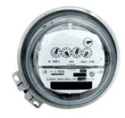Schools Reduce IT Energy Use, Report Says

CDW Government, Inc., source of Information Technology (IT) solutions to governments and educators, today released its 2009 Energy Efficient IT Report, based on a July survey of 752 information technology (IT) professionals in the public and private sectors who purchase IT equipment. The survey found that organizations are doing more to improve energy efficiency in IT compared to 2008, and as a result, are realizing significant savings in their energy bills. However, CDW-G also found that energy efficiency became less of a consideration in the IT purchase decision year-over-year, highlighting recessionary pressures to reduce equipment costs, even at the expense of greater, longer-term energy savings.
According to the U.S. Environmental Protection Agency, energy use in the nation's data centers doubled between 2000 and 2006 and is projected to double again by 2011. The Energy Efficient IT Report examines where energy efficiency ranks in IT decision-making priorities, along with improvements in IT energy efficiency and remaining challenges. Additionally, the report identifies top strategies for IT energy reduction employed by organizations that successfully reduced their IT energy bills. CDW-G surveyed IT executives in K-12 and higher education. business, federal, state and local government.
Short-term costs vs. long-term savings
The 2009 CDW-G Energy Efficient IT Report revealed that 52 percent of IT professionals whose organizations have energy management initiatives successfully reduced their total IT energy costs, up from 39 percent in 2008. Respondents reduced energy costs by focusing on energy efficiency in the purchase and management of IT equipment, employing measures including:
- Buying equipment with low-power/low-wattage processors
- Using network-based power management tools
- Using software tools within uninterruptible power supplies (UPS) to monitor power demand and energy use
- Monitoring data centers remotely to keep lights off when employees are not on site
- Managing cable placement to reduce demand on cooling systems
- Implementing server and storage virtualization to reduce the number of servers and storage devices drawing power
Energy efficient equipment identification
CDW-G's Energy Efficient IT Report found that industry and government are providing clearer information about what constitutes energy efficient IT equipment, enabling IT managers to make more-informed purchase decisions. Eighty-three percent of respondents said energy efficient products are becoming easier to identify, and almost all said the ENERGY STAR® label is very important for identifying energy-efficient products.
In fact, although the federal government's new ENERGY STAR® standard for servers is just three months old, two-thirds of IT executives with server procurement responsibility said they were familiar with the standard, and more than 90 percent of all survey respondents said their next server purchase would likely be an ENERGY STAR®-qualified product. Further, 92 percent of respondents with access to utility rebates said they have become a significant incentive for investment in energy efficient IT.
Tools and ideas to transform education. Sign up below.
Despite reliable product information and real energy savings, just 26 percent of IT executives with procurement responsibility say energy efficiency is a very important consideration when purchasing new equipment - down from 34 percent in 2008.
Successful energy reduction tactics
CDW-G found that organizations that have successfully increased IT energy efficiency employ three tactics:
- Ask IT to Manage: Organizations that asked their IT department to reduce energy costs have seen significant results - 57 percent reduced costs by 1 percent or more vs. just 39 percent of organizations that did not ask IT to make a change.
- Assign IT Responsibility: Sixty percent of organizations in which the IT department is responsible for the amount and cost of energy used in IT operations have taken specific action to reduce energy consumption, compared to 24 percent of organizations without IT accountability
- Incent IT Success: Organizations in which the IT department is incented to improve IT energy efficiency are more likely to make energy reduction a priority - 58 percent vs. just 30 percent of those who are not incented
The report includes findings specific to each of the industry groups surveyed:
- Forty-eight percent of IT departments in K-12 school districts have responsibility for reducing their energy bills - more than any other public-sector segment. Responsibility gets results: 54 percent of districts have reduced their IT energy costs, up from 35 percent in 2008.
- Fifty-three percent of higher education institutions incent their IT department to save energy. The rewards are paying off: 54 percent of institutions have reduced their IT energy costs, up from 38 percent in 2008
- State and local governments' top energy-saving measures include purchasing ENERGY STAR®-qualified devices and coaching employees to turn off equipment when it is not in use. 56 percent of state and local governments have reduced their IT energy costs, up from 41 percent in 2008.
- Fifty-four percent of businesses have asked the IT department to reduce its energy costs, and 60 percent of business IT departments are responsible for their energy bill. More than half of businesses have cut their IT energy costs.
- Forty-seven percent of federal agencies have reduced their IT energy costs, up from 34 percent in 2008. Purchasing ENERGY STAR®-qualified devices and server virtualization are two of their top energy saving measures.
CDW-G's Energy Efficient IT national online survey was taken during July 2009. It collected responses from 752 IT professionals with responsibility for purchasing IT equipment in K-12 education, higher education, business and government. The margin of error for the total sample is ±3.6 percent at a 95 percent confidence level. The margin of error for each industry sample is ±8.0 percent at a 95 percent confidence level.
For a copy of the complete report, visit http://www.cdwg.com/energyefficientIT.
